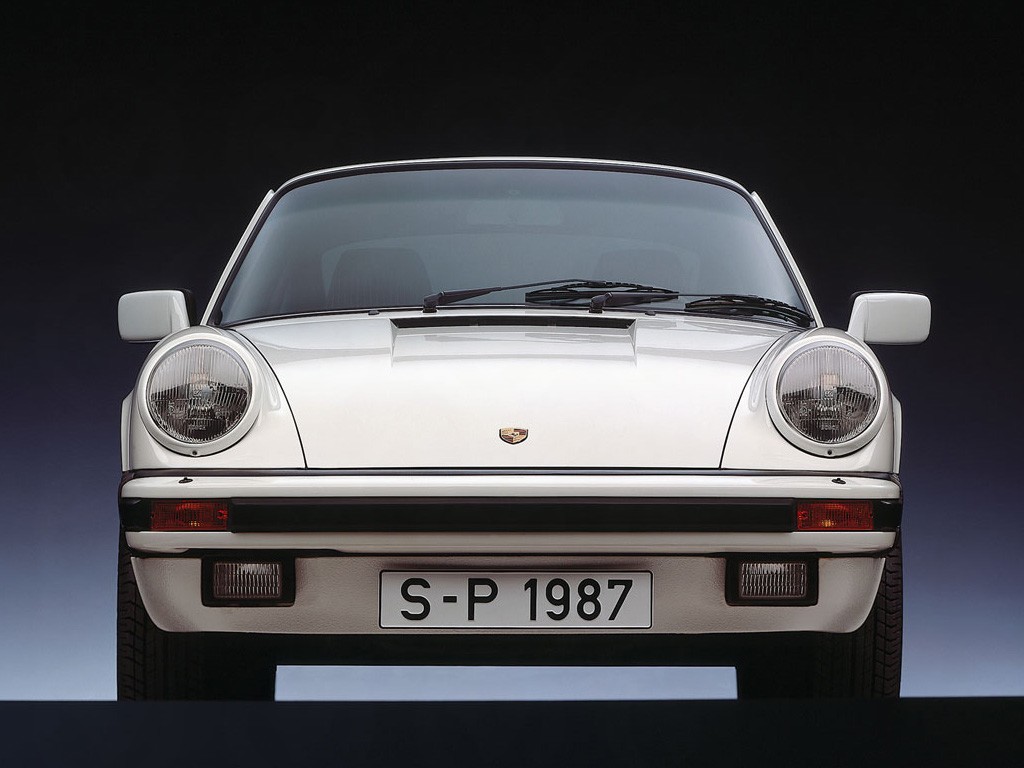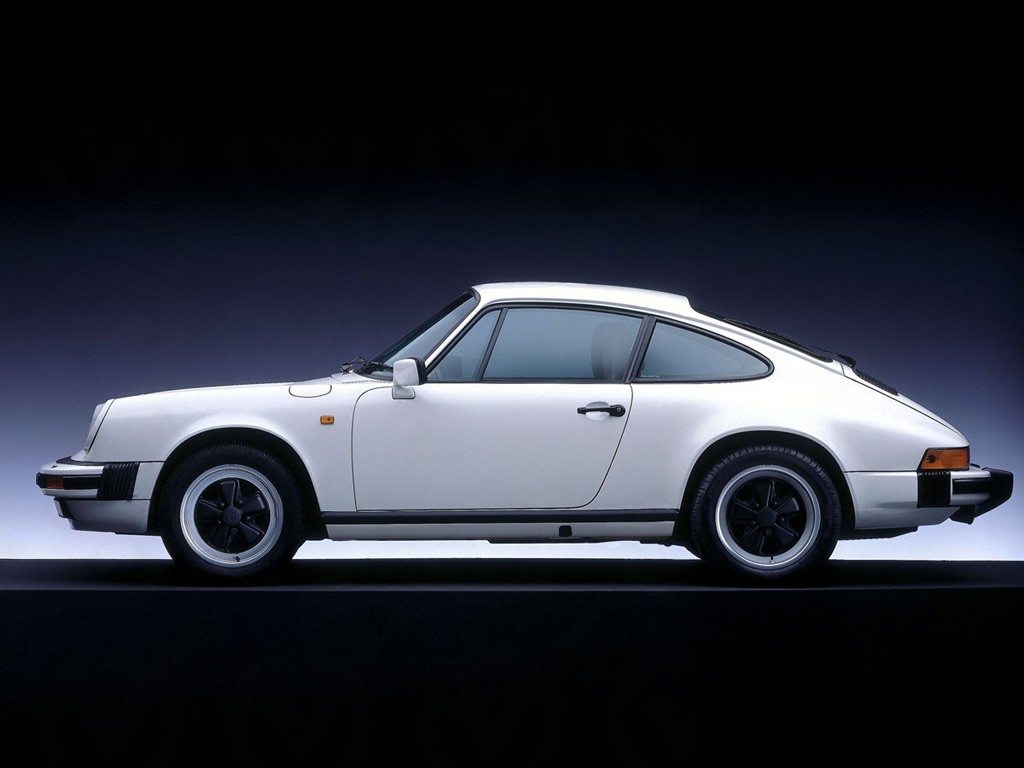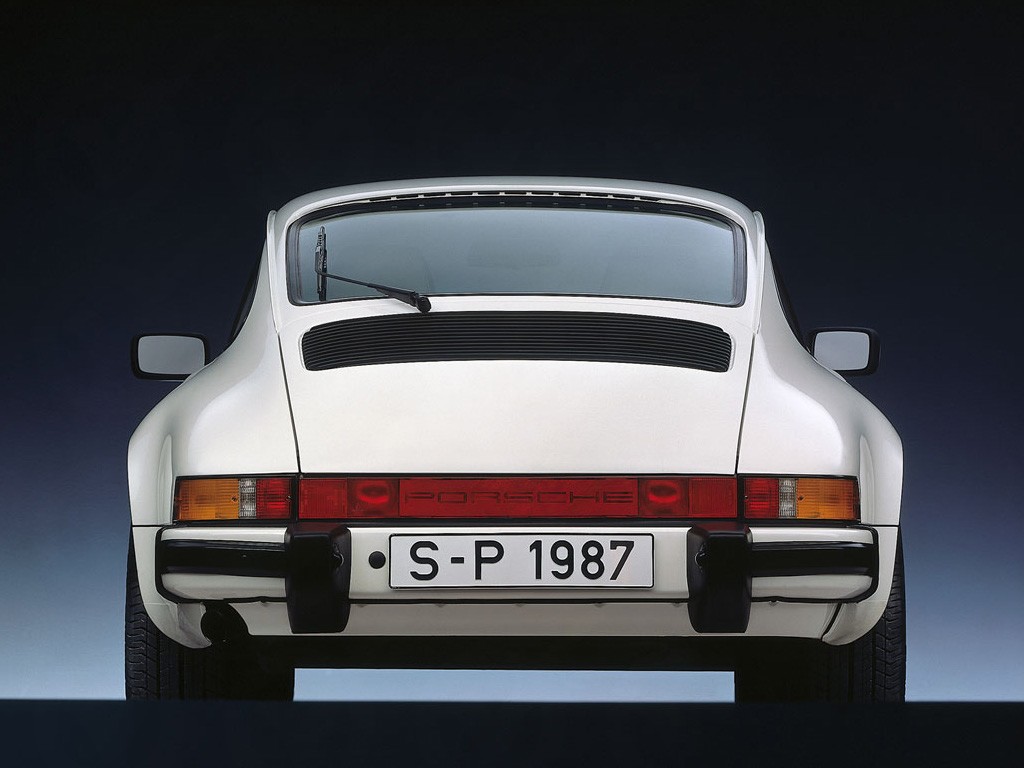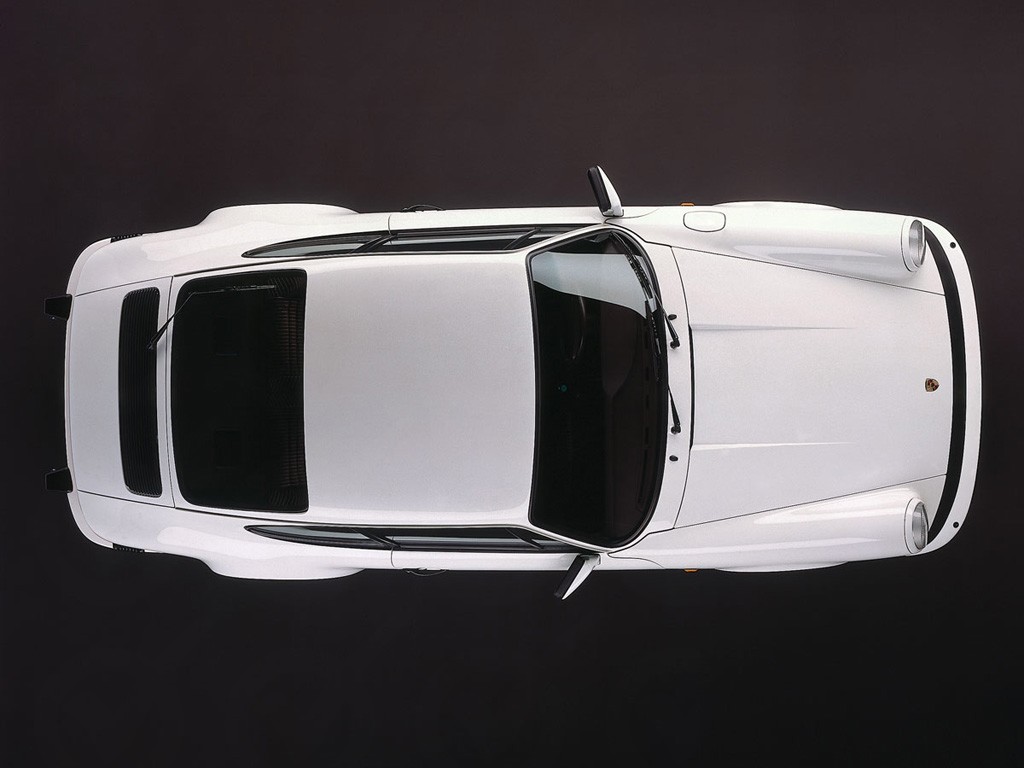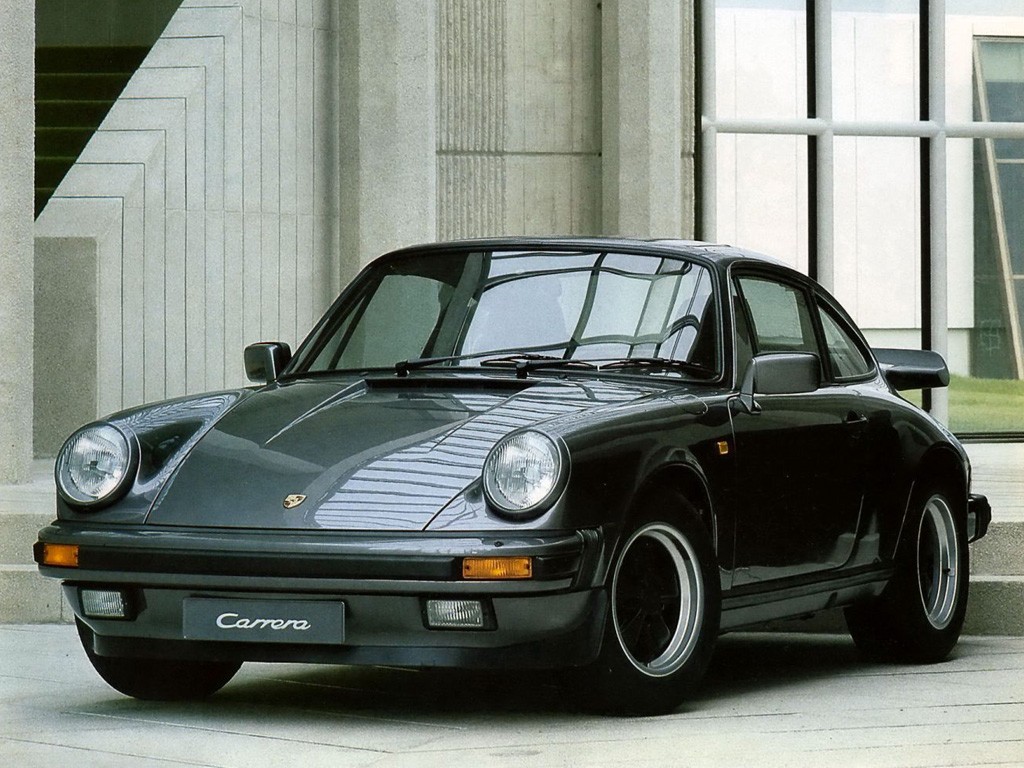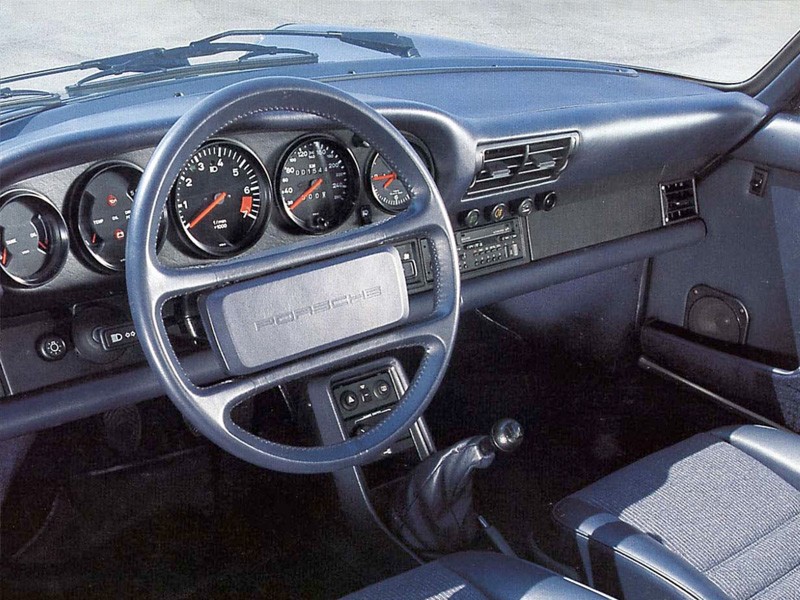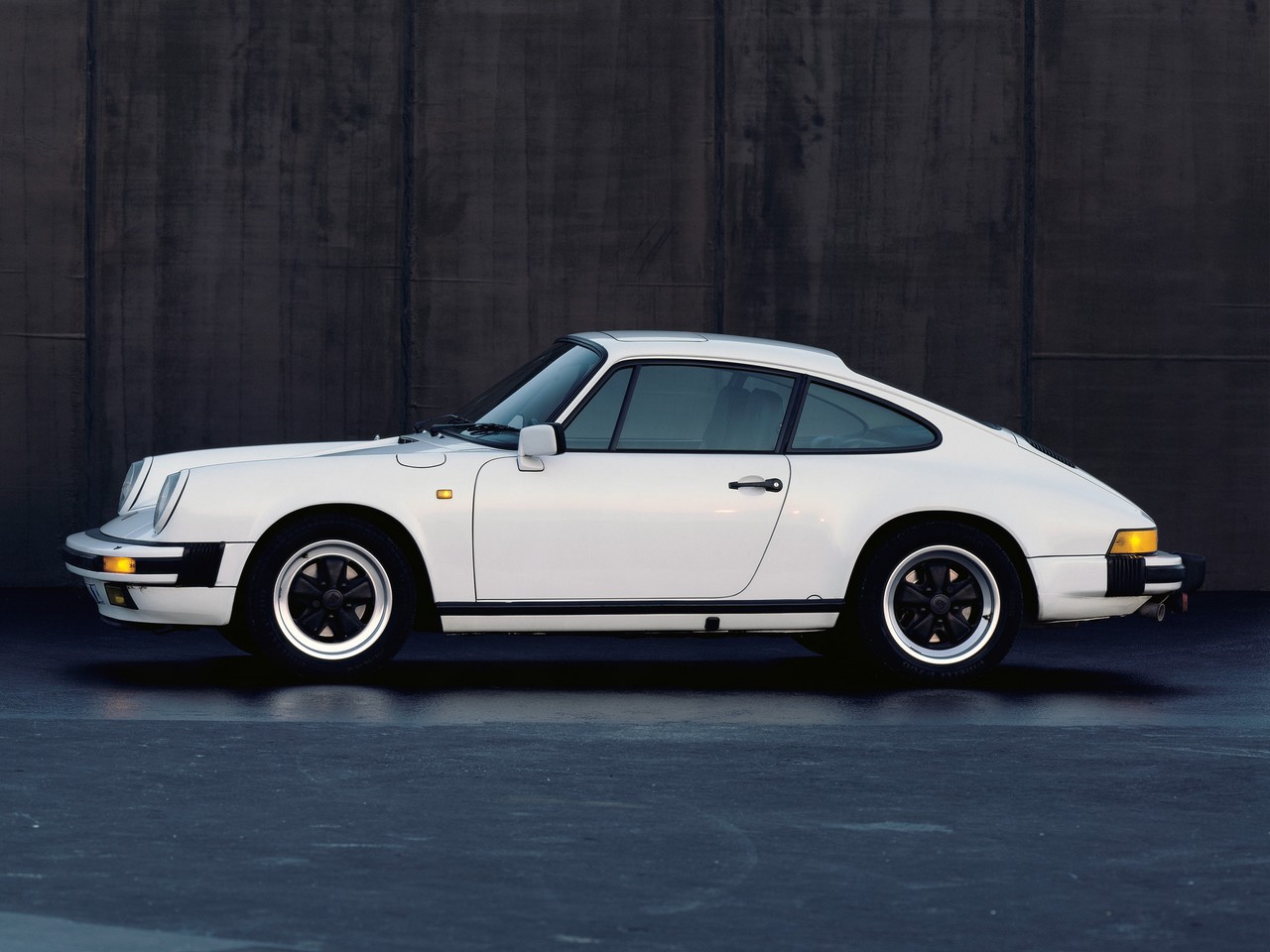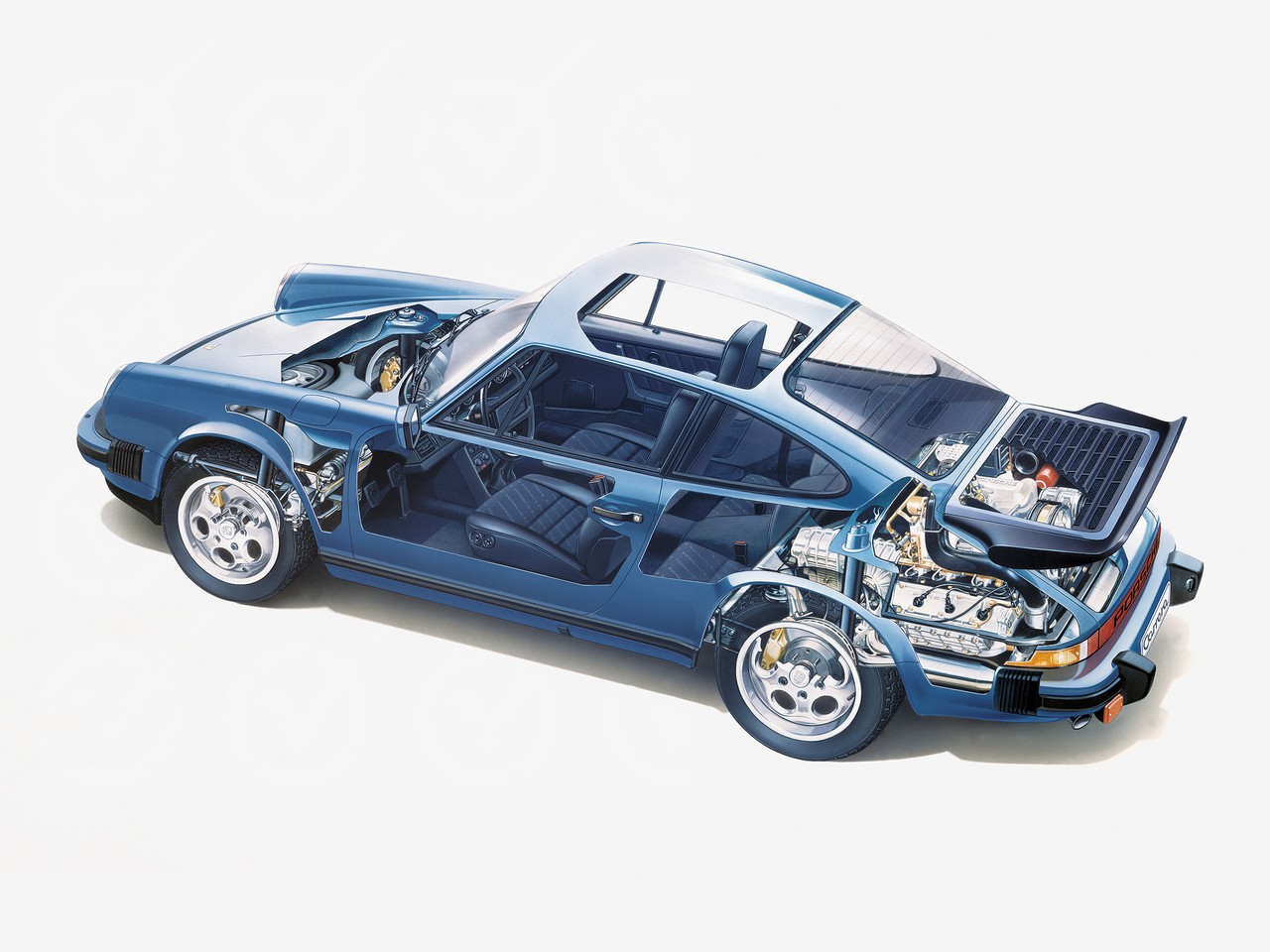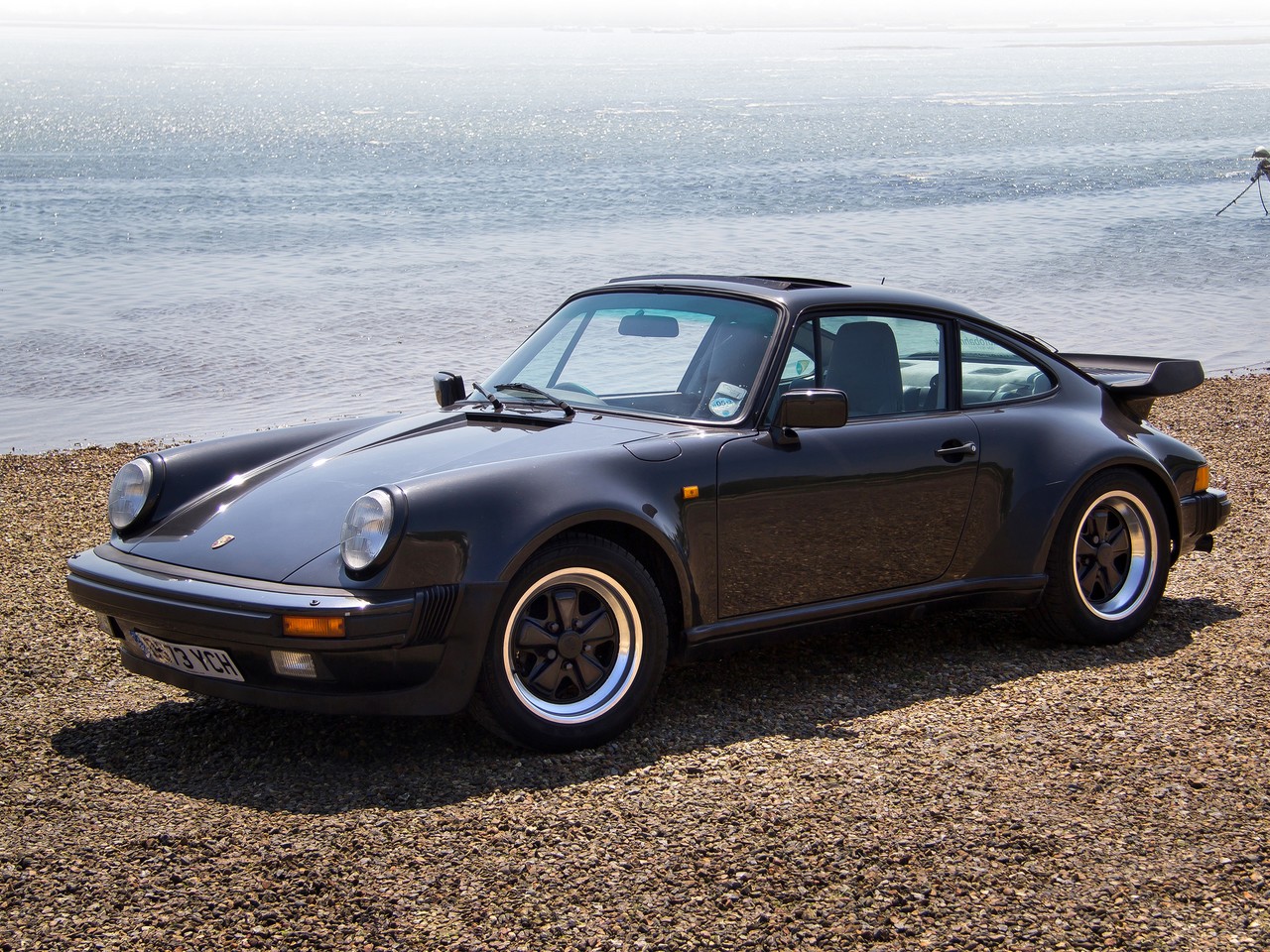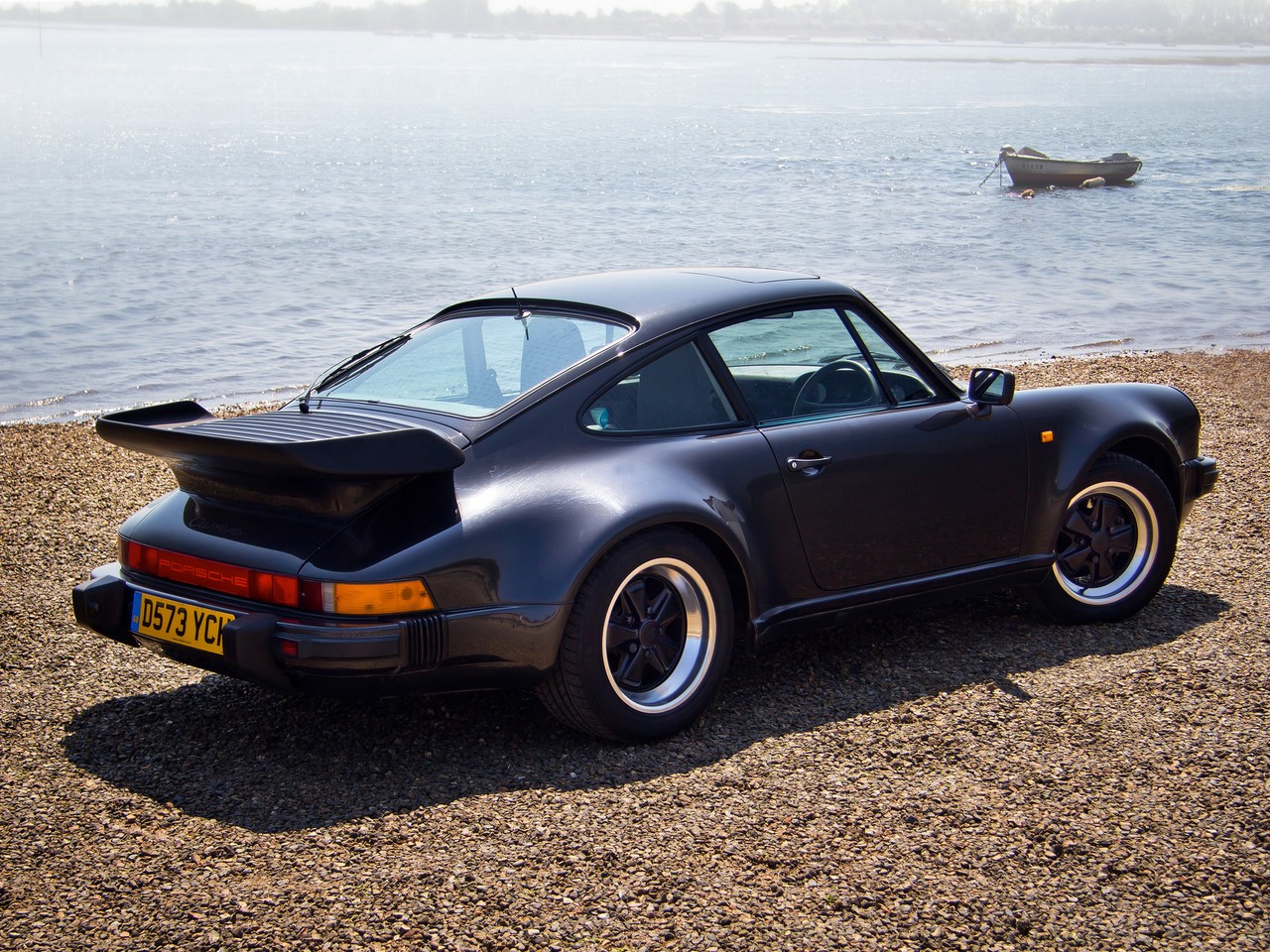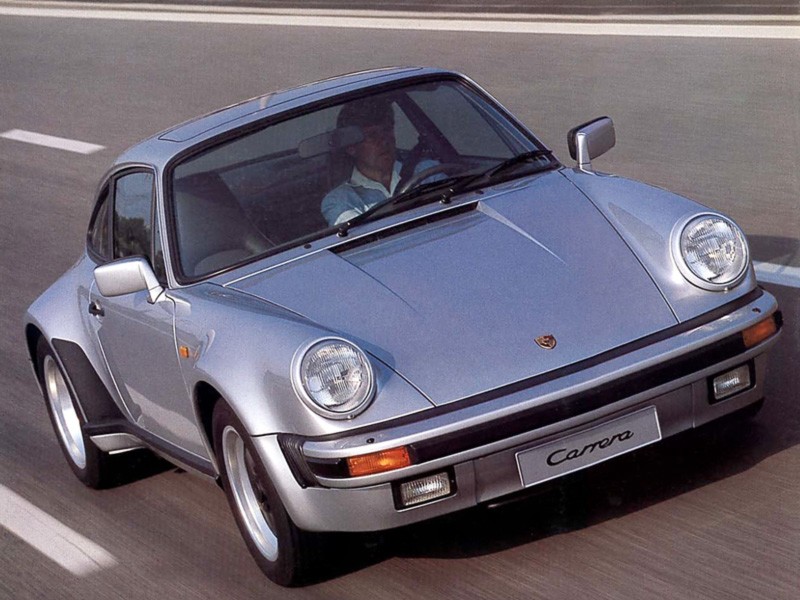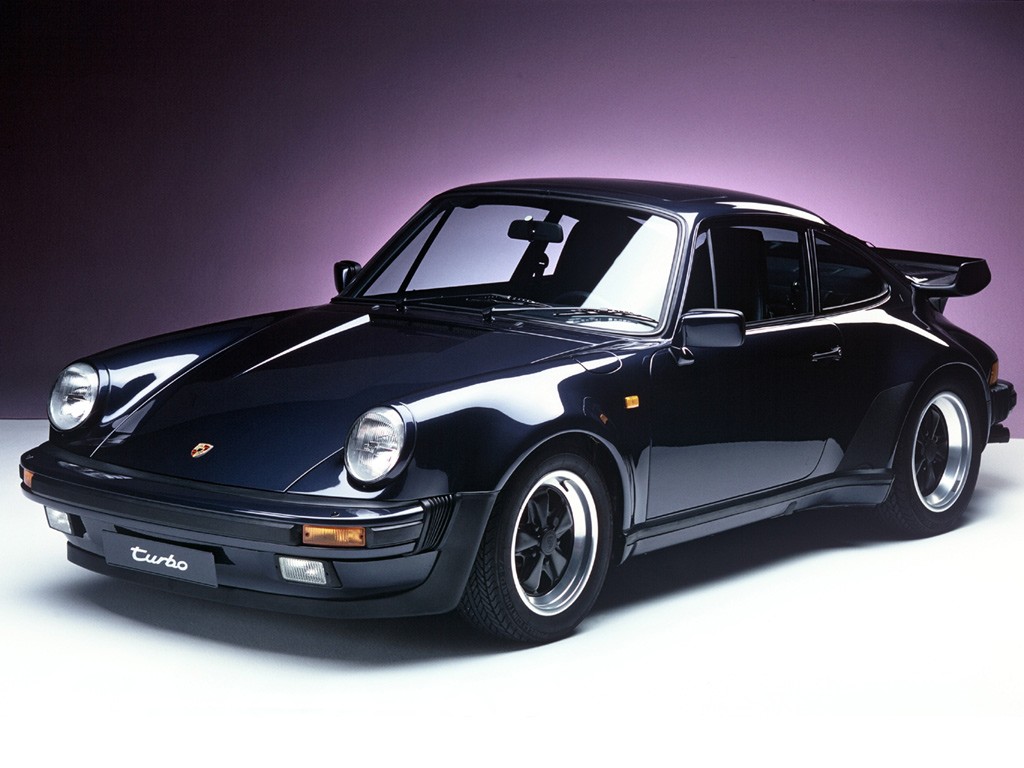
- Eager flat six-cylinder engines
- Competent dynamics
- Accurate steering
- Responsive brakes
- An iconic, collectible sports car
- Overly firm ride
- Lift-off oversteer
- Steering wheel kickback over bumps
- For 911 Carrera, pre-H program models have notchy yet vague manual gearshift
Review: Porsche E- to K-Program 911 Coupe (1983-89)
Overview
Production of the E Program 911 Coupe commenced in August 1983, with sequential letter-based names introduced annually thereafter. Manufactured in Stuttgart, Germany, the 911 range consisted of Carrera and Turbo variants.
Engines
The 911 Carrera continued to have an air-cooled engine with an alloy cylinder block and head, a single overhead camshaft per cylinder bank (chain-driven), two valves per cylinder and Nikasil cylinder liners. For the E Program models, however, capacity was increased to 3.2-litres (3164 mm) by extending the stroke to 74.4 mm (from 70.4 mm); bore was unchanged at 95.00 mm. Further changes included the introduction of Bosch L-Jetronic fuel injection with 2 DME (Digital Motor Electronics) programmed ignition and oil-fed chain tensioners.
For the 911 Carrera, Australian delivered vehicles were powered by four different engines from 1983 to 1989:
- From August 1983 to July 1984: the 930.20 engine was fitted with an active charcoal canister and had a compression ratio of 10.3:1;
- From August 1984 to 1986 (i.e. the introduction of unleaded petrol): the 930.26 engine which was fitted with an air pump. This engine was used for Sweden and Switzerland vehicles and its compression ratio remained at 10.3:1;
- From February 1986 (i.e. unleaded petrol) to July 1986: the 930.21 engine which was identical to the US catalyst engine, designed for 91 RON unleaded petrol and had a compression ratio of 9.5:1; and,
- From August 1986 to July 1989: the 930.25 engine which was designed for 96 RON unleaded petrol and also had a compression ratio of 9.5:1.
Available in Australia from 1983 to 1985, the 930 Turbo engine differed in that it was fitted with a KKK turbocharger and its compression ratio was lowered to 7.0:1.
Dimensions and suspension
The E Program 911 was 4291 mm long, 1652 mm wide, 1320 mm tall and had a 2272 mm long wheelbase. With its flared wheel arches (and wider wheels), the 930 Turbo was 123 mm wider (at 1775 mm), though the wider 930 Turbo body was available for 911 Carrera models as part of the M491 Supersport or ‘Turbo look’ option (see below). Compared to its D Program predecessor, the E Program 911 could be identified by its lower front bumper skirt with integrated fog lights.
The 911 had independent front suspension with longitudinal torsion bars and lower transverse arms, while the independent rear suspension had semi-trailing arms and transverse torsion-bar springs.
M491 Supersport (‘Turbo look’) option
Buyers could specify the M491 Supersport (or ‘Turbo look’) option which included the wider wheel arches (and wheels), ‘tea tray’ rear spoiler and stiffer suspension. The M491 Supersport option also included the upgraded braking package of the 930 Turbo which consisted of 304 mm by 32 mm ventilated and cross-drilled front brake discs and 309 mm by 28 mm ventilated and cross-drilled rear discs.
| Engine | Years | Trans. | Peak power | Peak torque | |
|---|---|---|---|---|---|
| Carrera | 3.2-litre petrol F6 (930.20) | 1983-84 | 5sp man. | 170 kW at 5900 rpm | 284 Nm at 4800 rpm |
| 3.2-litre petrol F6 (930.26) | 1984-86 | 5sp man. | 170 kW at 5900 rpm | 284 Nm at 4800 rpm | |
| 3.2-litre petrol F6 (930.21) | 1986 | 5sp man. | 152 kW at 5900 rpm | 265 Nm at 4800 rpm | |
| 3.2-litre petrol F6 (930.25) | 1986-89 | 5sp man. | 160 kW at 5900 rpm | 265 Nm at 4800 rpm | |
| Carrera Club Sport |
3.2-litre petrol F6 (930.25) | 1987-89 | 5sp man. | 179 kW (est.) | N/A |
| 930 Turbo | 3.3-litre turbo petrol F6 | 1983-85 | 4sp man. | 221 kW at 5500 rpm | 430 Nm at 4000 rpm |
August 1983: E Program
Compared to its D Program predecessor, the E Program 911 Carrera was fitted with larger and thicker brakes with 304 mm by 24 mm front discs and 309 mm by 24 mm rear discs, while the power-assisted ‘Hydrovac’ brake booster from the 930 Turbo was also adopted. Furthermore, the 911 SC was fitted with 6J x 15 wheels with 185/70 front and 7J x 15 wheels with 215/60 rear tyres as standard.
Aside from the introduction of Bosch L-Jetronic fuel injection and 2 DME engine management (detailed above), changes for the E Program 930 Turbo were limited to the introduction of a dash-mounted brake pad warning indicator and a new heater system with a three-speed fan.
August 1984: F Program
From August 1984, Boge dual-tube ‘GZ’ gas-pressure shock absorbers were fitted as standard, while the 930 Turbo was fitted with thicker anti-roll bars (22 mm front and 20 mm rear). For improved cooling, a finned cooler replaced the serpentine lines in the front passenger fender well.
Visually, F Program models could be identified by the radio antenna which was embedded in the rear windscreen. Inside, a four-spoke leather-wrapped steering wheel was fitted as standard. Standard features were also revised, though these varied between markets.
August 1985: G Program
In August 1985, the interior was revised: a new dashboard housed larger air conditioning vents, the front seats were lowered by 20 mm (with sports seats offered as a no-cost option), the sunvisors featured vanity mirrors with sliding covers and a new cabin heat temperature sensor was fitted.
The 911 Carrera was also fitted with thicker anti-roll bars measuring 22 mm (diameter) at the front and 21 mm at the rear, while the rear torsion bears were also increased to 25 mm diameter (previously 24 mm).
August 1986: H Program
From August 1986, the 911 Carrera was fitted with a new five-speed Getrag G50 manual transmission which had Borg-Warner synchronizers and a hydraulically-operated clutch. A thermostatically-controlled fan was also introduced to improve cooling.
Visually, the H Program models could be identified by their standard ‘telephone dial’ five-hole wheels (with 195/65 VR 15 front tyres) and the rear reflector strip was revised to include reversing lights and rear fog lights.
August 1987: J Program
From August 1987, the 911 Carrera was fitted with 15-inch Fuchs forged alloy wheels (replacing the ‘telephone dial’ alloy wheels). Standard features were also revised, though these varied between markets.
August 1988: K Program
From August 1988, the 911 Carrera was fitted with 16-inch alloy wheels (6J x 16 front and 8J x 16 rear) with 205/55 ZR front and 225/50 ZR rear tyres. Changes for the 930 Turbo included fitment of the five-speed G50 transmission and thicker anti-roll bars (22 mm diameter front and 18 mm rear).
For both the 911 Carrera and 930 Turbo, the alarm system was also upgraded to include red LED lights in the door lock buttons which flashed when the system was activated.
September 1987 to September 1989: Carrera Club Sport (CS)
From September 1987, the Carrera Club Sport (or CS) was devised as a lightweight version of the Carrera with a more powerful engine. For the Club Sport’s M637 chassis, mass was reduced through the omission of the PVC underseal, heavy duty sound insulation (except for the engine and roof lining) and PVC coating for the fuel tank; a lightened space-saver wheel was also included.
Inside, the Club Sport had manually-adjustable front sports seats, a short-throw gearshift lever, mechanical window winders and the rear seats and belts were replaced with a carpeted shelf. Otherwise standard features such as central locking, rear speakers, storage compartment lids, coat hooks, a passenger vanity mirror and a glove box lock were omitted, while a simpler radio and manual heating system were also fitted. Although kerb mass for the Club Sport was quoted at 1160 kg, European Club Sports were estimated to be closer to 1135 kg.
The Club Sport’s engine was manufactured to ‘blueprint’ specifications with hollow-intake valve stems, a modified Bosch DME which increased peak revs from 6520 to 6840 rpm, modified engine/gearbox mounts and a modified air cleaner with carbon canister plug. For the five-speed G50 transmission, the fourth and fifth gear ratios were revised.
The Club Sport had firmer suspension with Bilstein sports dampers and 16-inch Fuchs forged alloy wheels with 6J x 205/55 VR16 front and 7J x 225/50 VR16 rear tyres. A limited slip differential was also fitted as standard.
Visually, the Carrera Club Sport could be identified by its ‘Sport Equipment’ front and rear spoilers, modified front bumper for increased airflow to the oil cooler, lightened non-recoil bumper mountings. Furthermore, omissions included the front fog lights, headlamp washers and rear windscreen wiper. The standard Carrera logo on the engine lid was also deleted, while discreet CS Club Sport graphics were generally positioned on the left-hand front wing. Under the bonnet, the Club Sport engine could be identified by the ‘SP’ which was stamped on the crankcase and cylinder head.
Related links
